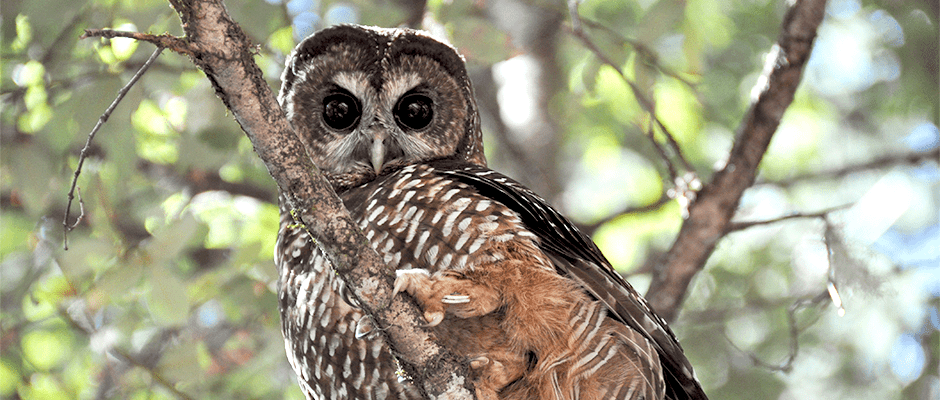Share this article
Poisons from marijuana farms pose hazard to California owls
The poisons that California marijuana growers use to kill rodents are moving through the food web, recent research found, and may be negatively impacting threatened northern spotted owls (Strix occidentalis caurina), as well as invasive barred owls (Strix varia).
The birds are consuming prey contaminated with rodenticide, researchers found, indicating that the chemicals may be reaching a variety of non-target species. Previous studies demonstrated contamination in fishers.
“One objective of the study was to see if we can use species like spotted owls to investigate if the food web is contaminated,” said Mourad Gabriel, lead author of the study published in Avian Conservation and Ecology.
A TWS member and the director of the Integral Ecology Research Center and research faculty member at the University of California, Davis, Gabriel and his colleagues collected owl samples in Humboldt, Mendocino and Del Norte counties, where growing numbers of both permitted and unpermitted farms are serving either licensed marijuana sellers or the black market.
In Humboldt County alone, county officials estimate that upwards of 12,700 private grows are unpermitted and illegally operating, Gabriel said. With only a small percentage of private grows permitted, Gabriel said, “even if a fraction of those illegal, unpermitted grows were using rodenticide, there are still hundreds or thousands of source points within occupied northern spotted owl territory.”
Because barred owls are invasive and removal projects are underway, samples from those birds were easier to come by, Gabriel said. Northern spotted owls, whose diets are more rodent-based than barred owls, were harder to find. The team received samples from museums, universities and other researchers and biologists.
Rodenticide did not appear to be the primary cause of any of the owls’ deaths, the team concluded, but it was widely found in the tissue samples. Seventy percent of spotted owls were exposed to one or more anticoagulant rodenticide. Forty percent of barred owls were exposed.
“We are concerned this may be another potential ecological stressor, because right now, northern spotted owls decline by one and a half to 3 percent each year,” Gabriel said. Past research found sub-lethal doses can lead to reduction in fitness ability, lethargy, emaciation and other deleterious impacts in owls, he said.
Tests showed that all of the rodenticides consumed by the owls were powerful second-generation anticoagulants, which were restricted for use by the state of California.
Header Image: A northern spotted owl perches on a tree branch in California, where rodenticides from marijuana farms may be affecting the birds. ©J. Mark Higley/Hoopa Tribal Forestry








